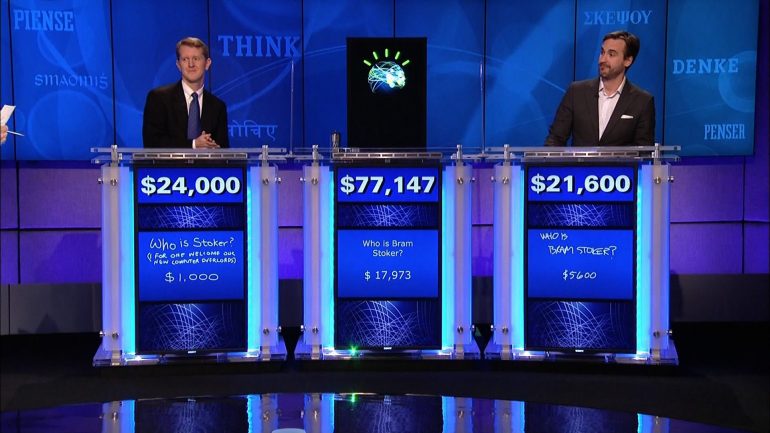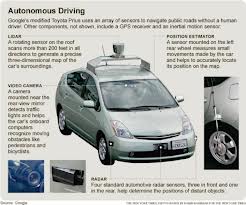“I for one welcome our new computer overlords.” Ken Jennings was humble in accepting his Jeopardy defeat to the silicon of Watson. While not the theme of the recent Wavefronts Wireless Summit 2014, it’s a fair subtext.
Now that connected cows and connected home appliances are no longer the stuff of bad internet jokes, the relationships between mobile devices and everyday things seems to be catching on. Forecasting of 50 billion things being connected to the internet by 2020 equates to sizeable opportunity. Over 500 people in attendance (double of last year) at the summit indicates a growing interest in this business.
The healthcare industry stands to benefit from much of this innovation. More importantly it’s the patient who stands to gain the most. Jeffrey Betts leads IBM’s Chronic Disease Management and Personalized Healthcare activities in Canada, and presented, “Converting Big Data into Better Healthcare with Analytics.”
We spoke about the opportunities that Watson is presenting to healthcare professionals. It’s an an artificially intelligent computer system capable of answering questions posed in natural language. “Watson holds the promise of providing a physician with all of the evidence, all of the time at the point of care,” said Betts. In spite of their 8-12 years of training and education, keeping current with information is a huge challenge. As he points out “the cold hard fact is velocity of change in health information far exceeds any humans cognitive capacity to absorb it. So physicians are obsolete at graduation and fall behind in their knowledge continuously.”
Technology like Watson is giving physicians the ability to draw on the latest evidence. This comprehensive collection of evidence makes a significant difference in the work they do diagnosing a patient, and in selecting a treatment.
Text is the key driver of healthcare communications, yet so much important context is lost. Bett’s points out “about 80% of medical information is done in the form of free text. It’s being able to actually utilize this to find facts about the patient that are not explicitly captured in some other system of record, like if they might be a smoker or not can impact the prognosis or treatment plan.”
Watson can both read and reason, and thus establish context. It has the ability to infer and understand the nuances of language. From the medical perspective Watson has the ability to place relevant facts that it finds in unstructured text, into context for the physician.
For instance, Betts shared that “in talking with Oncologists about their process for creating a treatment plan, there’s a lot of ambiguity and complexity. It’s takes time. It’s a very iterative process. By having all of the evidence relevant to the patient presented with options ranked in probability, plus the evidence associated with those options means added physician confidence is just a click away.”
With the Watson API it will be interesting to see what new innovation entrepreneurs will deliver. This is technology that can be key in breaking down of our current health system silos. The patient will finally become the centre of care.
But that wasn’t all that grabbed attention at the Wavefronts Wireless Summit.
Tim Hayden is author of the forthcoming “The Mobile Commerce Revolution” and announced to the crowd that “we’re at the end of the auto age”. Social is mobile, he said, and it’s changing our relationship to “being” mobile.
Hayden offered that “if you look at what’s happening with Lyft for instance, it’s like virtual mobile hitchhiking. It’s getting simpler to get a car only when you need it, and paying for it only when you use it. To a younger and more urban demographic the car is becoming a utility. It’s not the status symbol of past generations. As Hayden says, “everyone born after 1994 has a very different outlook on life. They’re not going to have a car define who they are.”
Michigan, California, Nevada and Florida now allow self-driving vehicle research to take place on their highways. There’s been the recent news of driving coast to coast without a drop of gas courtesy of Tesla. Transportation is in the early days of massive upheaval.
Hayden notes “it’s interesting that Uber pre-orders 2000 self driving cars two days after receiving it’s $258 million investment from Google Ventures. Here’s good old fashion ‘peanut butter and jelly’. You have the service and you have the OEM talking with each other about how to make this extremely efficient. Not paying drivers, a lower infrastructure cost per vehicle, not worrying about driver errors, changes the game.”
Jay Giraud is cofounder and CEO of Vanoucer’s Moj.io, which is connecting the car to the internet. He believes personal transportation is “about turning your car into a platform. It can now act and behave like a smartphone. We’re envisioning new models of ownership, new ways of commuting, new ways of connecting with people while you’re on the road, and getting the things you need in a very contextual and automated way.”
While he’d love a self-driving car, Giraud knows the reality of mass adoption is still on the distant horizon. What he’s see right now is the fact that “we all do the same commute, but we all have different needs. How we use our cars, how connect with cars, how we find cars, get in cars, and maybe even how we own cars is up for grabs right now.”
Regardless of technology, the devices and how they’re connected, none will solve our global challenges. Only people can solve people challenges like carbon emissions and personal wellness. Ideally technology will be the enabler to a better future.




